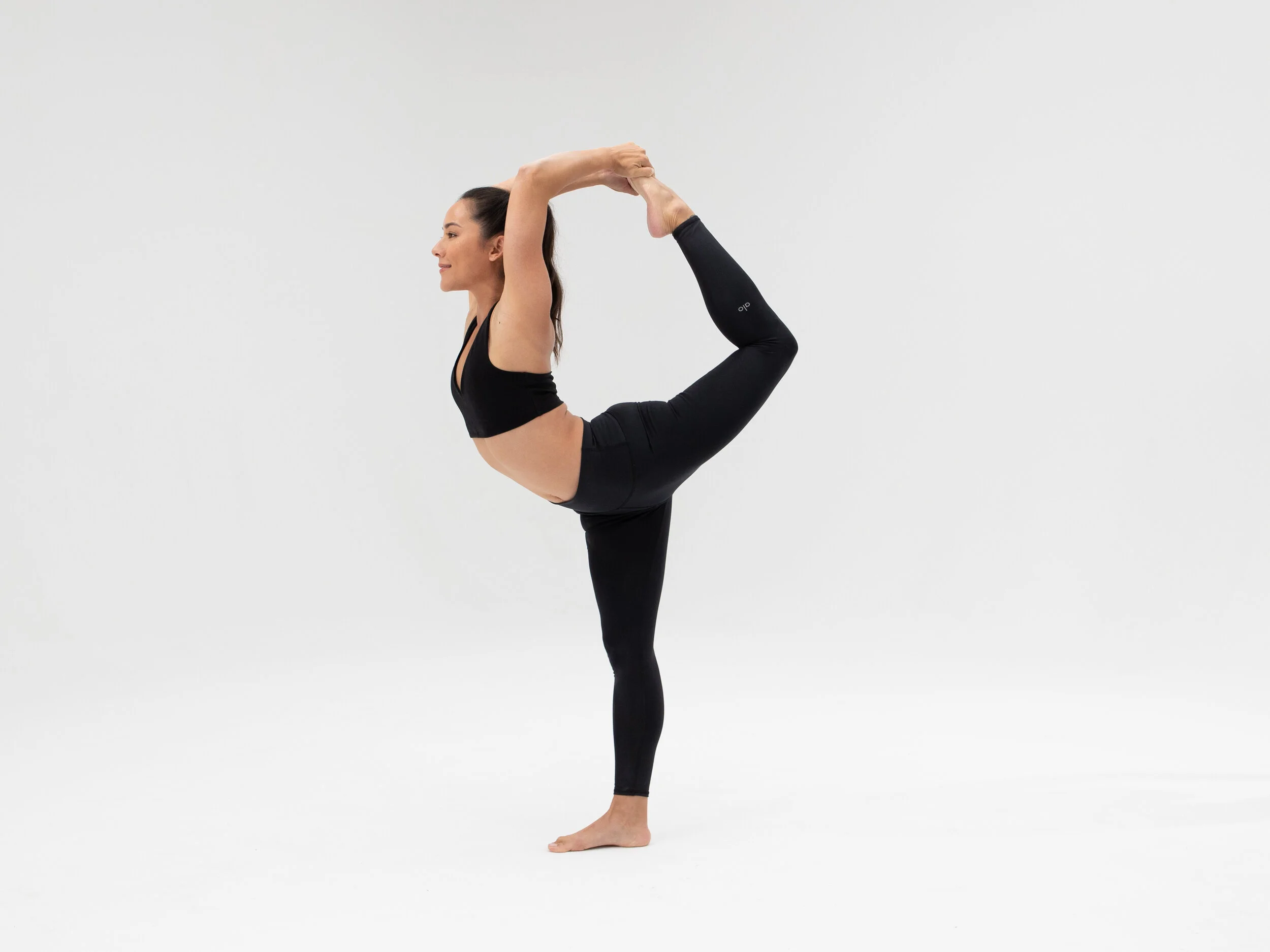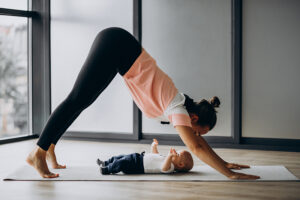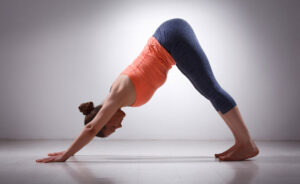
Introduction
Stress is omnipresent. We face a number of stressors in our day to day lives. Job insecurity, relationship and health problems and a myriad of other issues become our stress triggers. If not managed early on, these stressors can lead to anxiety, depression and other psychosomatic conditions. In such a scenario, managing stress with the help of certain relaxation techniques seems the only way out.
Yoga has been practised since ancient times to enhance immunity and build mental and physical resilience. Today, yoga is perceived as an exercise regime that can calm and relax our stressed-out mind and body. Yoga for mind relaxation includes certain yogic poses and breathing techniques which you can imbibe as part of your exercise routine.
How can I calm my mind with yoga?
The pressures of everyday life can be effectively dealt with a sustained yoga practise.
We have selected 7 yoga postures which when practised mindfully can effectively calm down an agitated mind while helping relax an exhausted body.
Child’s Pose (aka Balasana)

When it comes to yoga for mind relaxation, ‘(aka Balasana)’ or child’s pose should be practised. This yogic pose helps reduce fatigue and anxiety while increasing blood circulation to upper parts of the body. In this pose your hips and lower back are stretched which can be very calming.
Try this pose by first sitting on the heels. Leave some gap between your thighs. Bend forward in this position by extending your upper body. Your midsection should rest between the thighs. Let your arms extend forward to touch the floor. Hold this position for about 5 minutes by taking several deep long breaths.
Cobra Pose (aka Bhujangasana)
Cobra pose (aka Bhujangasana) is the best yoga for mind relaxation. This spine strengthening pose helps to relieve tiredness and stress. ‘Bhujangasana’ helps to uplift your mood as well as your energy levels.

To practise this pose, lie flat with your face towards the ground. Place your palms on the floor with some distance between your shoulders. Your pelvis and lower body should be always on the ground. Take a deep breath and lift your chest from the ground facing upwards. Let your lower body stay grounded. Pay attention that you lift from your abdominal region rather than using your arms for resting your body. Hold this pose by taking deep breaths. Then, rest your body on the ground while you exhale.
Warrior II (Virabhadrasana)

This stimulating and balancing pose can help relieve stress and tension. This pose is ideal to relieve backache which is one of the many symptoms of stress.
In this pose, you will be required to distribute your weight equally between your legs. Bend your front knee and keep your hips in square forward position. Extend both your arms over both your legs.
Dancer’s Pose (Natarajasana)
This pose resembles Lord Shiva’s dancing avatar. This stress relieving pose strengthens your legs and ankles while stretching your shoulders, abdomen, groin and thoracic region. ‘Natarajasana’(Dance Pose) calms the mind and helps improve memory.
Begin by standing in ‘Tadasana’. Breathe in and lift your left foot while ensuring that your body weight rests on the right foot. Your both hips and chest should be parallel to the floor and mat respectively. Your right arm should be extended straight from shoulders to your fingers. Hold the left foot outer ankle firmly with your left hand. Your right foot toes should be pointing ahead while you gaze ahead. Your torso should be kept erect. You can hold this pose for up to half a minute. Release and repeat from other side.
Forward Fold Pose (Uttanasana)
This yoga pose stretches the hamstrings and the calves. It also helps mitigate tension in the neck, head and shoulder areas. To perform the forward fold pose, stand up and place your feet at a hips-width distance. Bend your knees and fold forward. Your hands should rest on opposite elbows. Sway sideways to release tension in the lower back region. Then, gently roll up to the standing position.
Reclining Bound Angle Pose (Supta Baddha Konasana)

This yoga for mind relaxation helps soothe tired body. It gives a good stretch to inner thighs while opening up the hips.
To do this pose, lie on your back and join your feet soles by touching them together. Your one hand should be brought to your heart region while the other hand rests on the belly. Close your eyes. Alternatively, you can stretch your arms overhead and rest your right palm in your other hand. Keep breathing deeply.
Corpse Pose (Savasana)
:max_bytes(150000):strip_icc()/savasanah_justlaying-5c547a3546e0fb00012b9e25.jpg)
Considered perhaps one of the most effective poses of yoga for mind relaxation, Savasana (Corpse Pose) helps reduce stress by calming the mind. The Corpse pose helps in calming down of the central nervous system and aids the immune and the digestive systems. Known to kindle spiritual awareness, the Corpse pose is also an easy and simple yoga pose to practise.
In this pose, lie flat on the ground on your back. Gently roll open your feet while flipping your palms open facing the ceiling. Place both your shoulders down your back. Loosen up your entire body and keep your eyes closed.
Looking Ahead
Besides the above-mentioned yoga poses, there are many other yogic exercises that work to reduce stress and ailments throughout our body. Yoga, when done in tandem with pranayama and meditation becomes an effective tool to calm our frayed nerves and relax our body.
Frequently Asked Questions
What benefits does meditation offer for managing stress and improving sleep?
FlexifyMe's meditation sessions are crafted to aid in stress relief and enhance sleep quality, forming an integral part of our comprehensive wellness programs.
Can FlexifyMe help with weight loss through yoga?
Yes, our programs include yoga for weight loss, combining physical postures, breathing techniques, and meditation to help you achieve your fitness goals in a holistic manner.
Are FlexifyMe's yoga and meditation programs suitable for beginners?
Absolutely, we offer yoga for beginners and meditation guidance that's customized to your pace and starting level, ensuring a supportive and effective introduction to wellness.
How do FlexifyMe's corporate wellness programs benefit employees?
Our corporate wellness programs are designed to promote health and fitness in the workplace, offering online yoga classes and meditation sessions that fit into busy schedules and support overall employee well-being.
What kind of personalized yoga instruction does FlexifyMe provide?
Our personalized yoga instruction is tailored to individual health and wellness goals, ensuring you receive one-on-one guidance that caters to your specific needs, whether it's for fitness, stress relief, or prenatal care.
How does FlexifyMe accommodate prenatal yoga needs?
We offer specialized prenatal yoga sessions that focus on gentle poses and breathing techniques to support health and wellness throughout pregnancy.
What differentiates FlexifyMe's approach to wellness and fitness?
FlexifyMe's holistic approach combines yoga, meditation, and nutrition advice, offering a rounded path to health and fitness that adapts to your lifestyle and personal goals.
Can FlexifyMe's online yoga classes be scheduled around my busy lifestyle?
Yes, our online yoga classes offer flexible scheduling options to seamlessly integrate into your lifestyle, ensuring you can maintain your fitness and wellness routine without hassle.
Does FlexifyMe offer any specialized programs for stress relief?
Our wellness programs include specialized yoga and meditation sessions focused on stress relief, designed to help you manage anxiety and improve your overall health.



